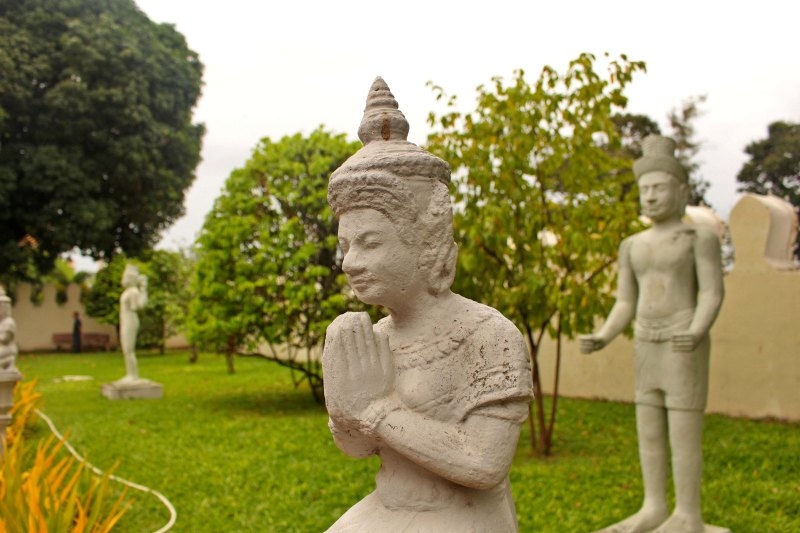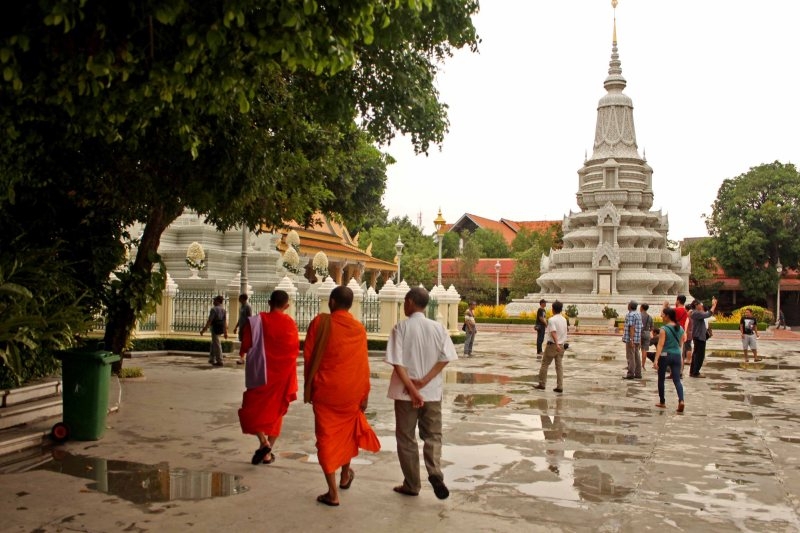Contributed by The Backpack Couple
Having completed our quick one-day tour of Angkor Wat complex back in Siem Reap, we hurried down south for an overnight trip to Phnom Penh. Although not as popular as Siem Reap, Phnom Penh (literally Penh’s Hill) is the capital city and seat of both the government and the ceremonial monarchy of the Kingdom of Cambodia. It is situated along the banks of the Tonlé Sap lake and the Mekong River.
Given its colonial history, this city has preserved its old French charm with several surviving landmarks and structures still standing, on top of its traditional Khmer and Buddhist architectures that comprise some of the underrated attractions in Cambodia. It is also in the middle of the popular Indochina backpacking trail and can be explored in a day or two.
Also read: Backpacking Cambodia, Vietnam, Laos & Thailand: 11-Day Itinerary & Cost Breakdown
What to see and do
The Royal Palace
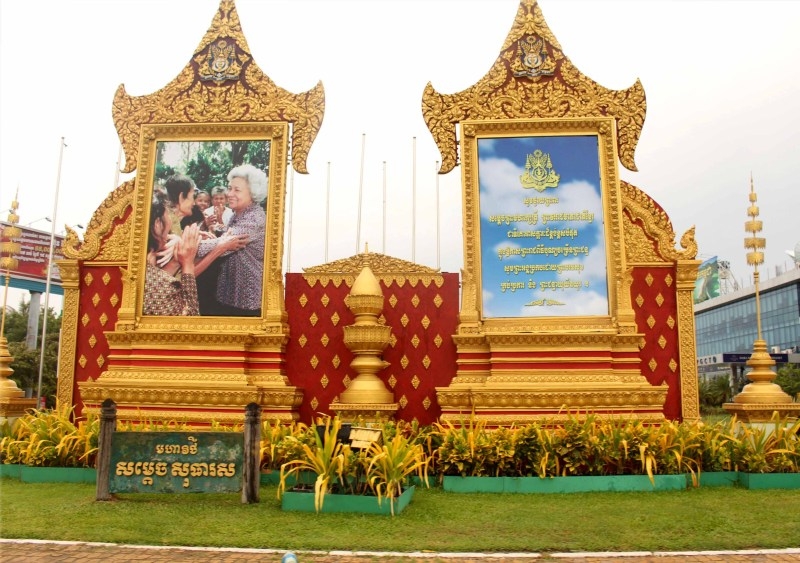
This complex of magnificent buildings and temples which is the residence of the royal family of Cambodia was built in the late 1800s. The palace complex, located along the banks of the Tonlé Sap is divided into four main compounds that include the Silver Pagoda, Khemarin Palace, Throne Hall and the Inner Court. The design of the palace is said to be a mix of mainly Khmer architecture with some French influence.
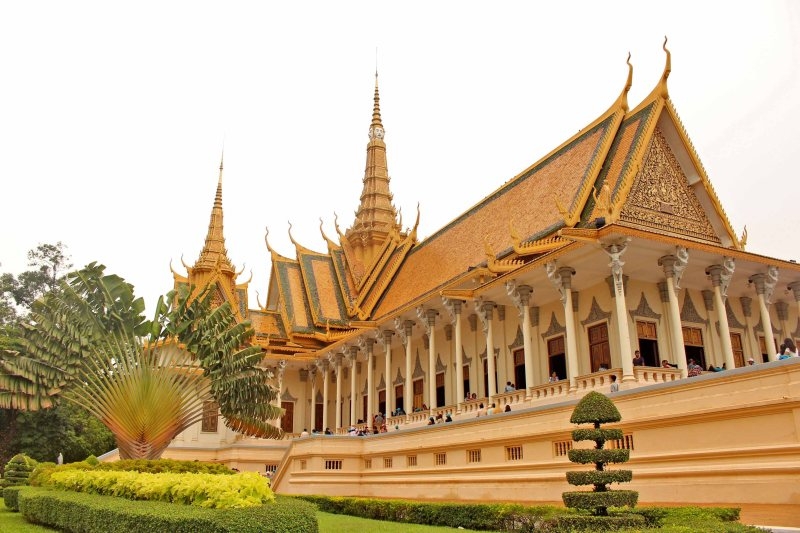
Throne Hall
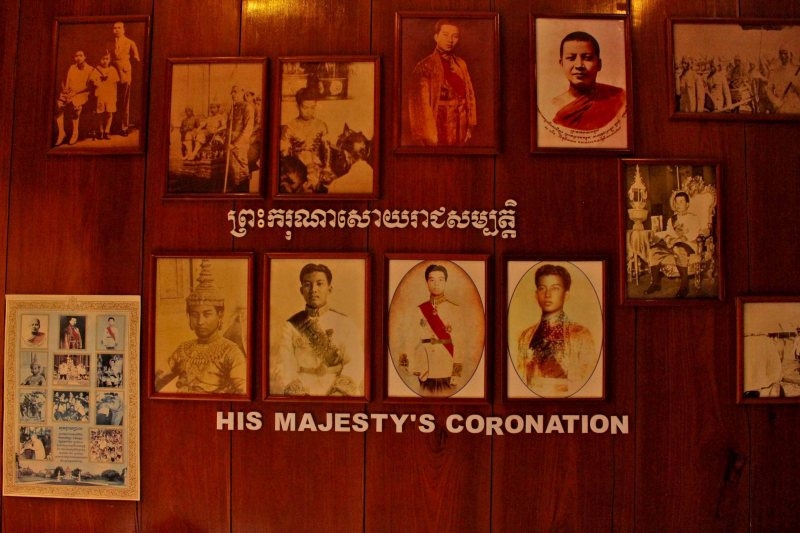
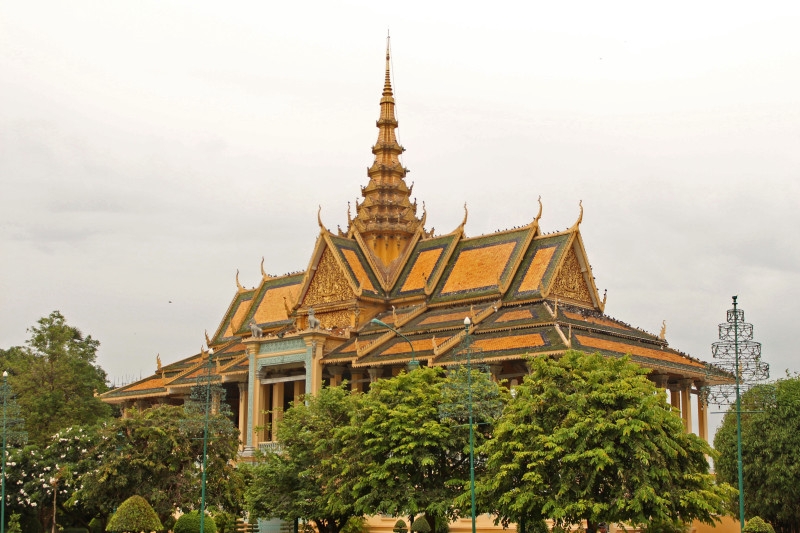
Moonlight Pavillion
Silver Pagoda
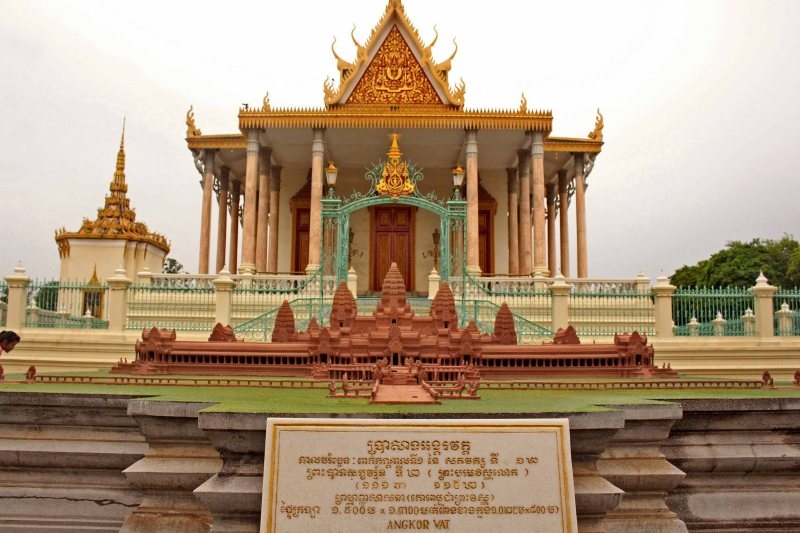
Within the Palace compound lies the Silver Pagoda (Wat Preah Keo Morokat) that houses the Emerald Buddha. It derived its name from the thousands of silver tiles of its interior floors. The temple is also where the King used to worship. The outside walls of the structure are decorated with murals depicting scenes from the Ramayana. At the back of the pagoda is a miniature model of the Angkor Wat.
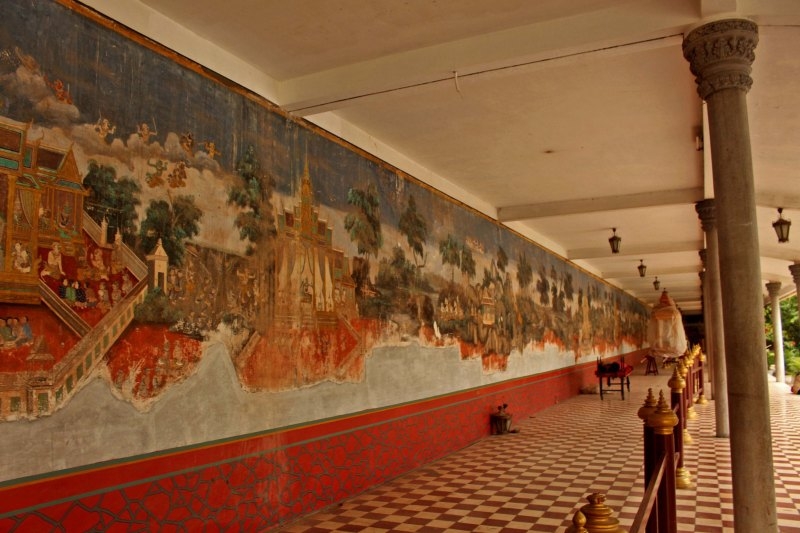
It is also surrounded by several stupas including the King Norodom I stupa that houses the ashes of the late king.
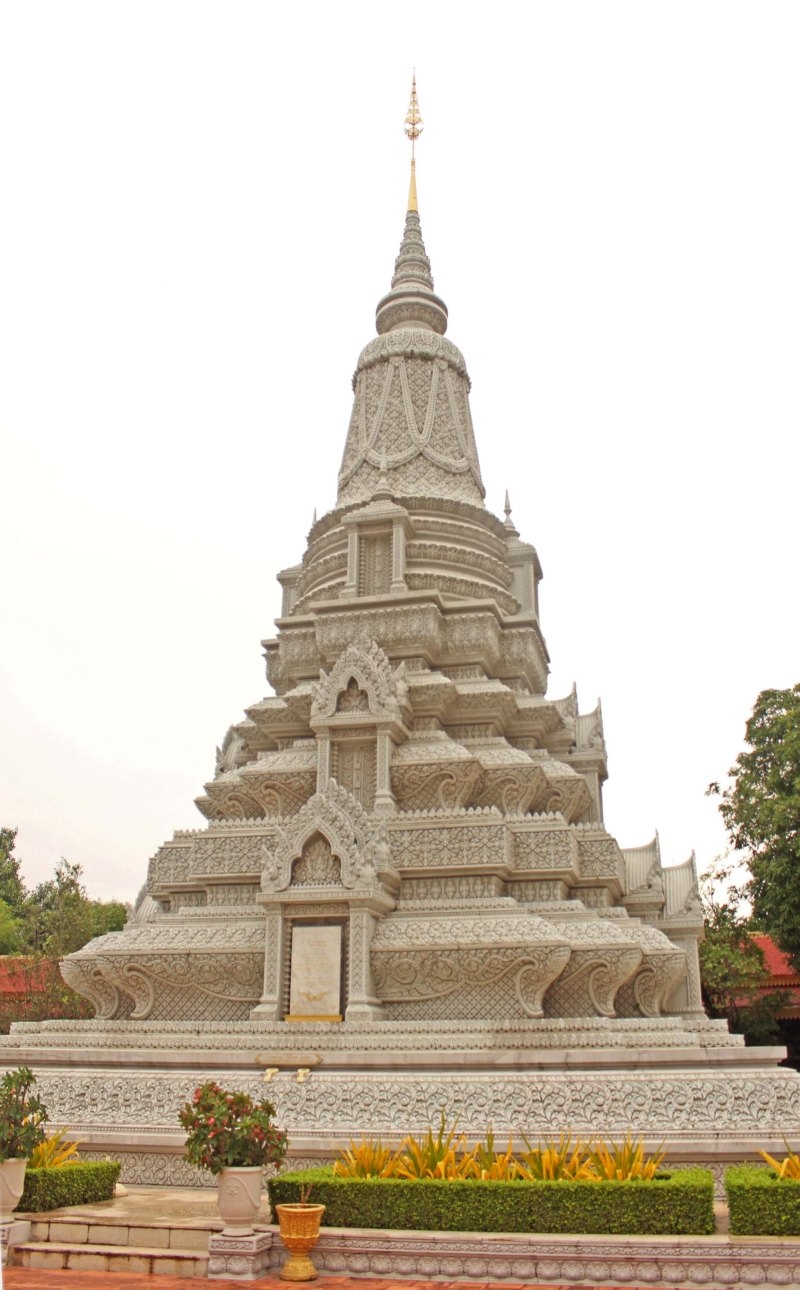
King Norodom’s stupa
National Museum
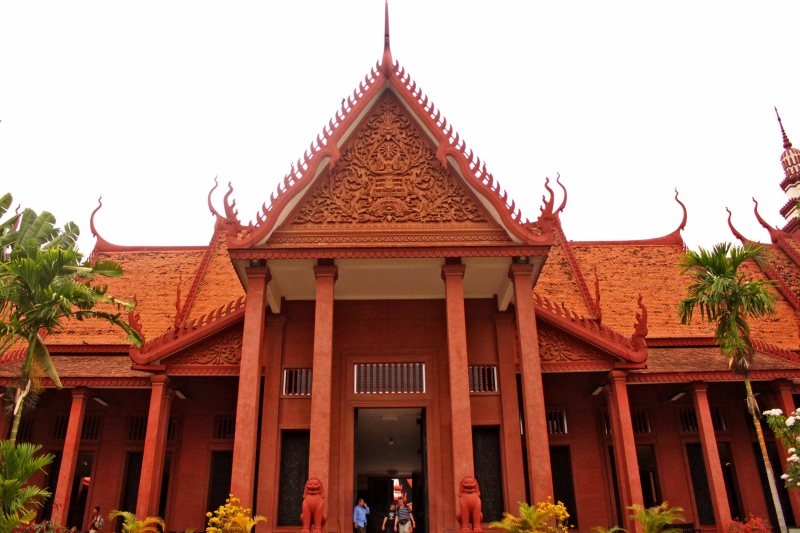
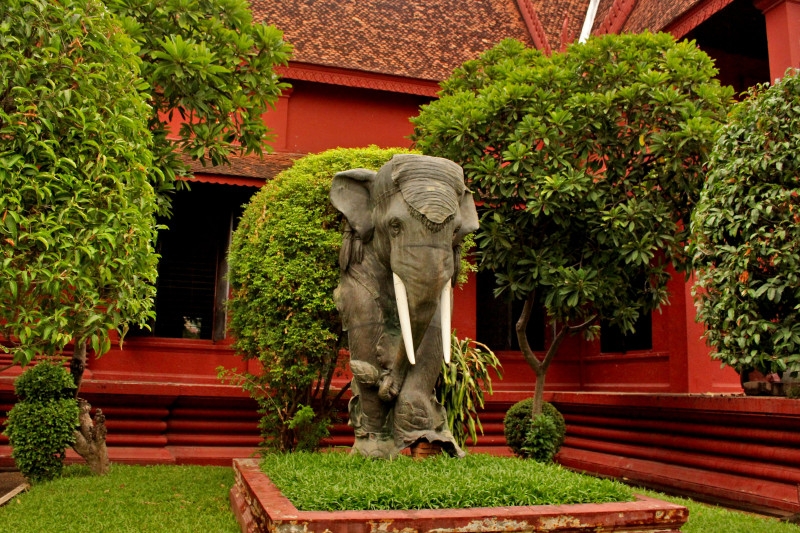
Established in the 1920s, the National Museum of Cambodia is the largest cultural and archaeological museum in the country and prominently houses one of the largest collections of Khmer arts and artefacts. Inspired by Khmer architecture for its design, it also features a courtyard in the middle of the compound. It is located right across the Royal Palace and is open daily. Operation hours are from 8am to 5pm and admission rate is US$5 for foreigners.
Also read: 7 Days Cambodia Itinerary: The Best of Siem Reap, Phnom Penh & Sihanoukville
Wat Phnom
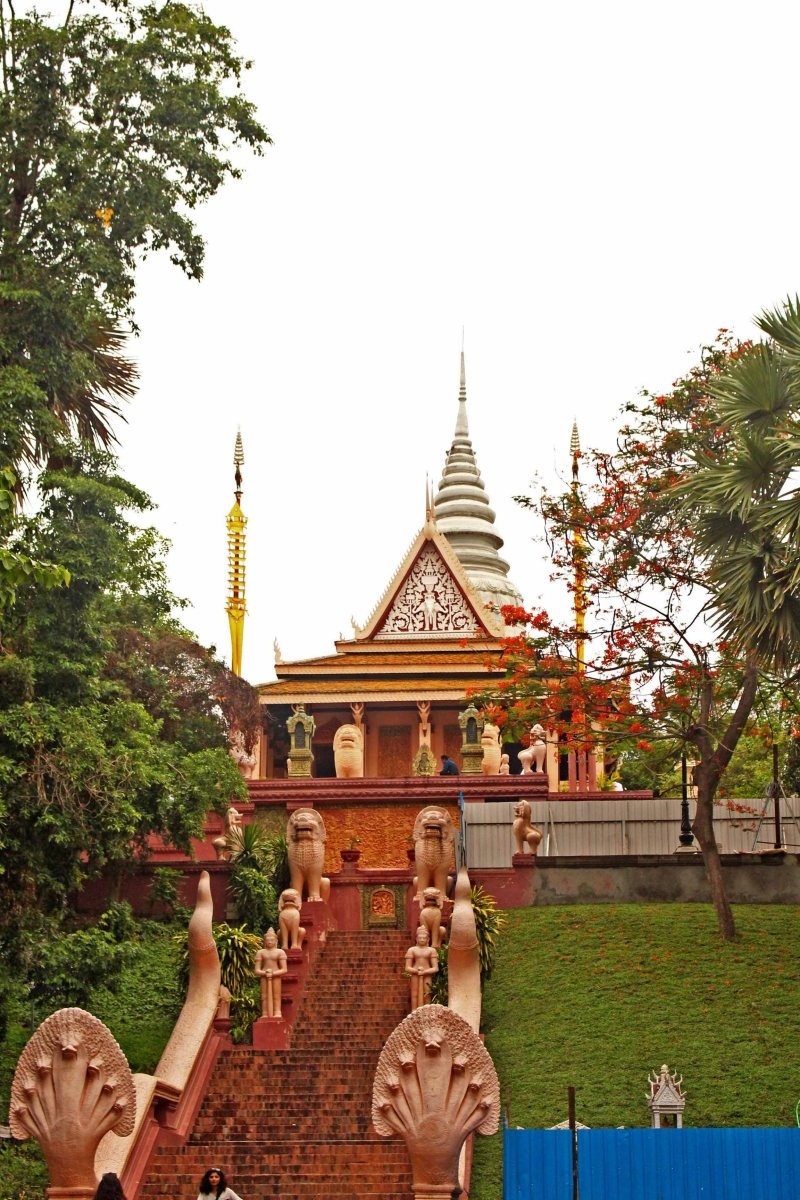
Built in 1372, this Buddhist temple is one of the most notable and religious sites in the city. Aside from being situated at the central point of Phnom Penh, it is also the tallest religious structure in the capital.
Independence Monument
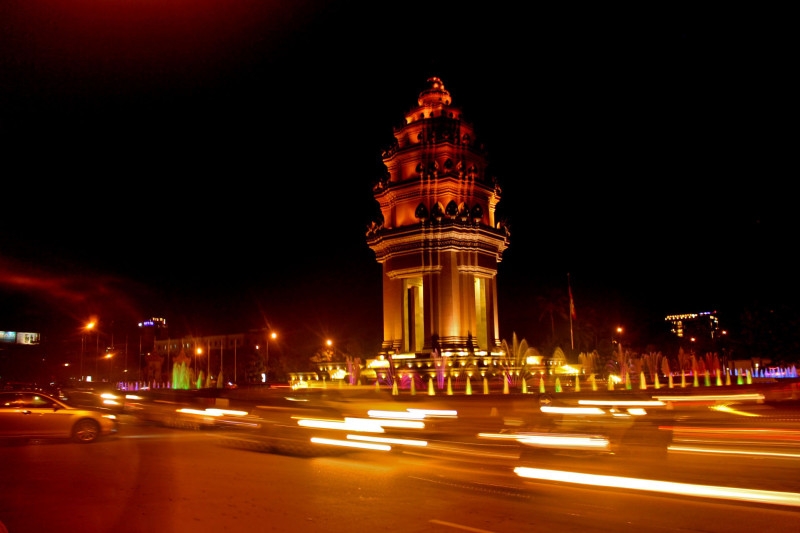
This stupa-inspired structure is one of the most notable landmarks located in the city. Erected in 1953, this symbolises the independence of Cambodia from French colonial rule.
Cambodia Post Office
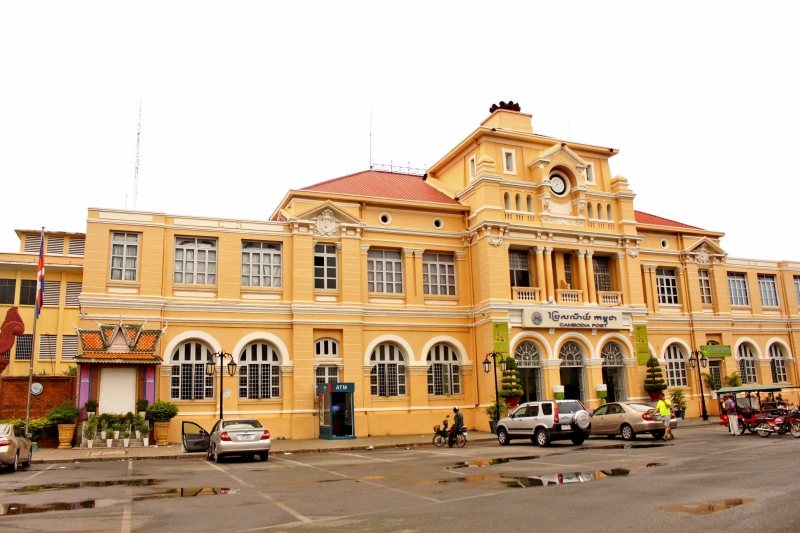
It is one of the remaining and notable French architectures in the city and closely similar to Ho Chi Minh post office in Vietnam. You can send some post cards from here to anywhere in the world.
Choeung Ek Killing Fields
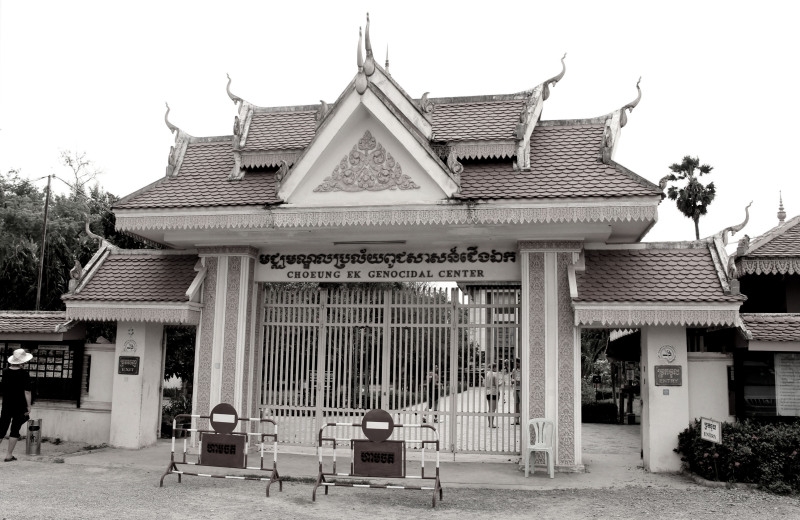
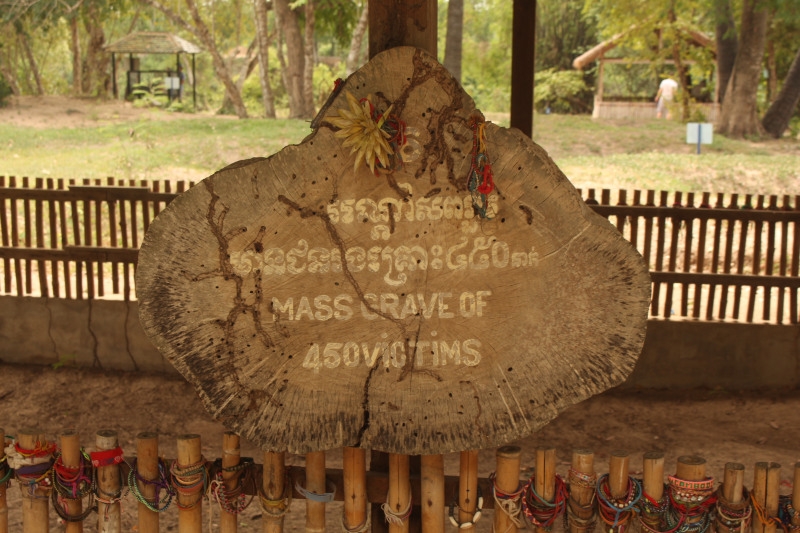
This former orchard turned into mass grave (and later on a memorial) in the outskirts of Phnom Penh is the site of one of the worst genocides in history during the Khmer Rouge regime of Cambodia.
Known as the Killing Fields, it is here where the Khmer Rouge led by Pol Pot executed millions of Cambodians between 1975 and 1979. Prisoners who were detained and tortured at the S-21 Prison (Tuol Sleng) were said to have been summary killed at the Choeung Ek grounds. The government has converted the site into a memorial with a Buddhist stupa housing thousands of human remains.
When visiting this site, please observe silence, follow the rules and avoid necessary gestures (ex. wacky posts or selfies) in respect to the departed. Also, please stick to the recommended path/trail and be careful not to step on the human remains still scattered around the grounds. See our separate post on Choeung Ek and Tuol Sleng here.
Toul Sleng Genocide Museum
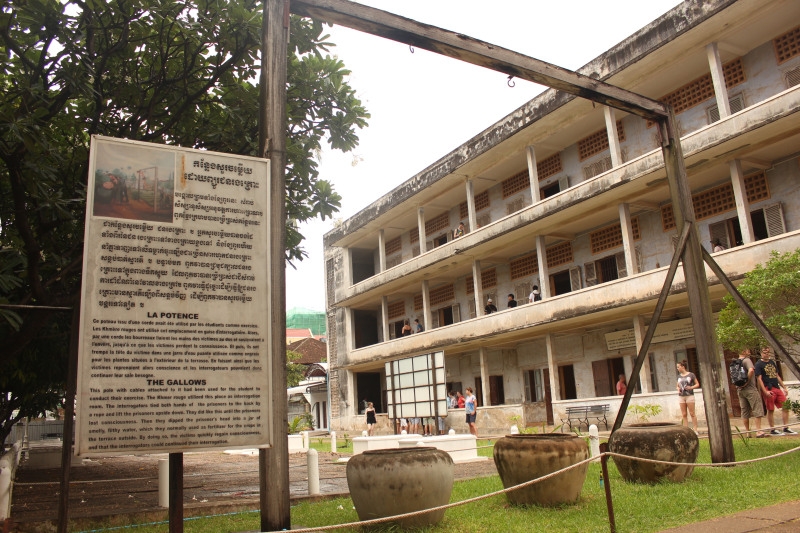
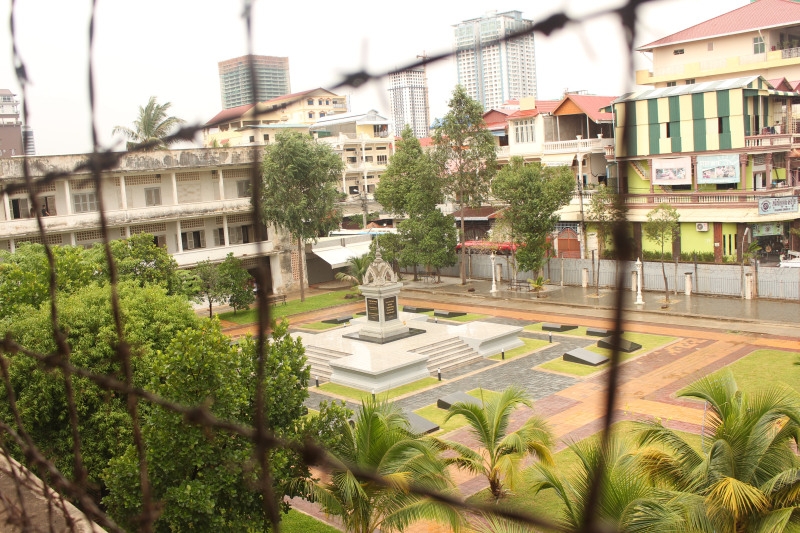
What used to be an ordinary high school compound was turned into notorious prison under the Khmer Rouge regime. The S-21 prison became the site of torture, interrogation and execution for political prisoners or those people suspected as enemy of the regime. Thousands were said to have been detained, tortured and later killed within the confines of the school-turned-prison. Many of the prisoners here were also brought to Choeng Ek to be executed en masse. When visiting this site, please observe silence, follow the rules and avoid necessary gestures (ex. wacky posts or selfies) in respect to the victims.
While we encourage a longer stay (2-3 days) to explore Phnom Penh, it is actually possible to cover the major attractions of the city in a day, like we did. Start your tour as early as 8am by going to the Killings Fields since this is located outside the city before returning for the S-21 Prison.
In the afternoon, you can visit the Royal Palace, Wat Phnom and the National Museum before ending your day in the Central Market or the Russian Market. You can hire a tuk-tuk for a day tour through your hotel for very affordable rates and for safety as well. You can spend your dinner at Sisowath Quay or the Riverside where cafés and restaurants line up the boulevard.
Getting there
By plane
The more popular mode of getting to Phnom Penh is by bus. However, there are also commercial flights that ply this route arriving at the Phnom Penh International Airport from Bangkok, Kuala Lumpur and Singapore.
By bus
Siem Reap-Phnom Penh. The more popular option and route is through the sleeping bus trip from Siem Reap. We booked via Giant Ibis Bus for the 6 hours trip at USD 15/pax.
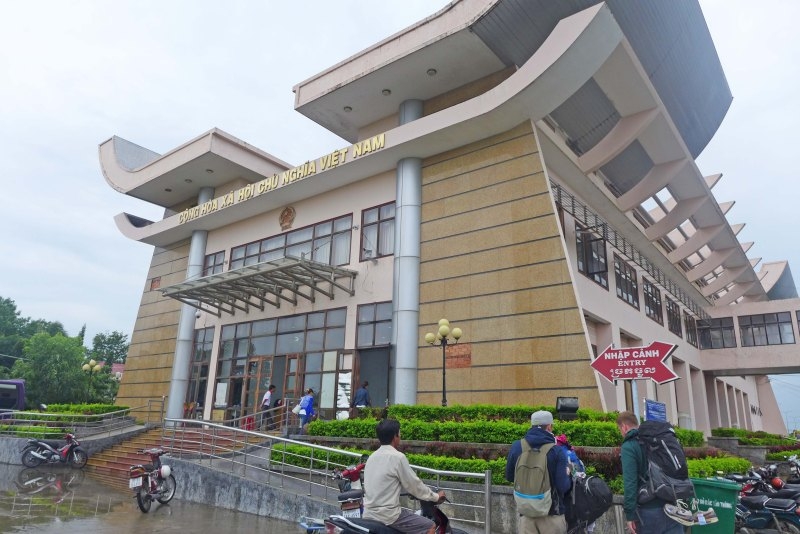
Viet Nam – Cambodian border
Ho Chi Minh-Phnom Penh. It takes another six-hours journey across the Cambodian-Vietnam border to reach Saigon. We availed the Mekong Express Bus for a six-hour long journey. Contrary to some of the reviews on border horrors, crossing this particular boundary is actually very smooth and convenient. Please note that Visa is required for some countries. For convenience, however, you can always apply online prior to arrival via Vietnam-visa.com.
Also read: How We Got Scammed While Crossing the Thailand-Cambodia Border
Where to stay
When looking for accommodation, we recommend booking through online booking sites like Agoda.com for the best deals. The concentration of low-cost hotels and inns are high in these areas so this is friendly for budget travellers like us. We booked at this hostel in Phnom Penh, which is very close to local and Western bars and restaurants and walking distance to the Independence Monument, government offices and embassies.
Feel at Home Guesthouse
Rates: $11 (₱500) 17-B Street 29, between Streets 294 and 308, Tonle Bassac, Phnom Penh
T: 023 223 849
[email protected]
Travel notes
- Make sure to bring with you enough amount of US dollars, particularly when in Cambodia. USD is widely accepted in Siem Reap and Phnom Penh although the local Cambodian Riel is convenient for small transactions.
- Cambodians are warm and friendly people. We haven’t had any serious problems in the course of the trip, especially in dealing with our tours operators. In fact, our drivers who also serve as guides have been the most helpful and humble. Gratuities or tips are encouraged, however, not required.
- It is best to secure local contact numbers of police, hospital and your nearest respective embassies for any emergencies. These are usually available in your hotels and online.
- Please note that the Indochina region is Southeast Asia’s centre of tourism so please always be vigilant and take extra care of your belongings (wallets, gadgets, etc.) especially in areas swarmed by tourists as organised and petty criminals have been invading these places.
